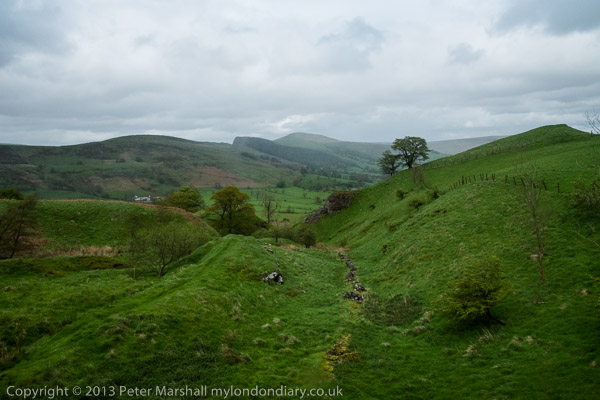
It was good to get away from London for a weekend, although it was a bit rushed and not entirely relaxing. But I was able to spend a little time using the Fuji XE1 and both the 14mm and 18-55mm and 8mm Samyang lenses.
The 14mm was great for some group pictures (not included on My London Diary) at the conference weekend I was taking part in, and also a good lens for some landscape pictures. But I did have one problem with it. It’s largely a matter of getting familiar with the system and I haven’t yet used it enough to spot the things that are likely to go wrong.
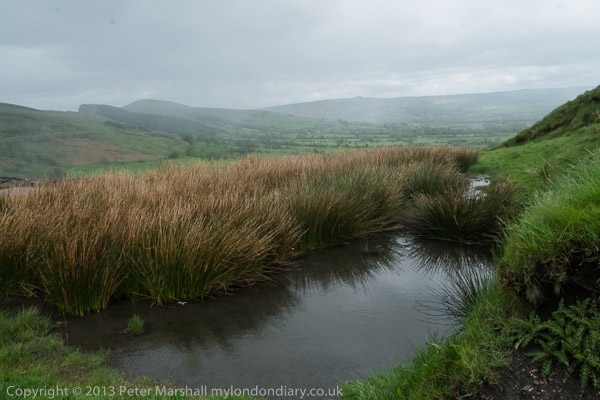
The focus ring on the lens has a nice feature which switches from manual to autofocus by a short push towards or away from the camera body, which also hides and displays the distance scale. It works very well and needs just enough of a push that you are unlikely to change it accidentally. It’s also very clear in the viewfinder when you are using autofocus, with a green rectangle or cross (depending on whether you are using single or continuous autofocus) appearing, But I still managed to make quite a few exposures with the lens in the manual position while I thought I was using autofocus. I’ve now set it to make a beep as well – something I really find annoying, but perhaps I need it.
It’s particularly annoying, because one of the things I really like about the Fuji-X cameras is how quiet they are compared to the Nikons. The other great thing is of course their light weight and small size.
On the Saturday afternoon we had a free couple of hours and left hoping to get to the top of Mam Tor, which was not a huge distance from the conference centre. I took the XE1, three lenses and several spare batteries, the camera on a strap around my neck, a lens in each of the large pockets on left and right of my waterproof and one on the camera, the plastic bag of batteries in an inside pocket. No need for a camera bag.
It was raining on and off, and it was no problem to tuck the XE1 inside my jacket to keep it dry, unlike the Nikon with the 16-35mm which is just a little bulky to fit comfortably. I could easily have fitted in a second Fuji body and lens too.
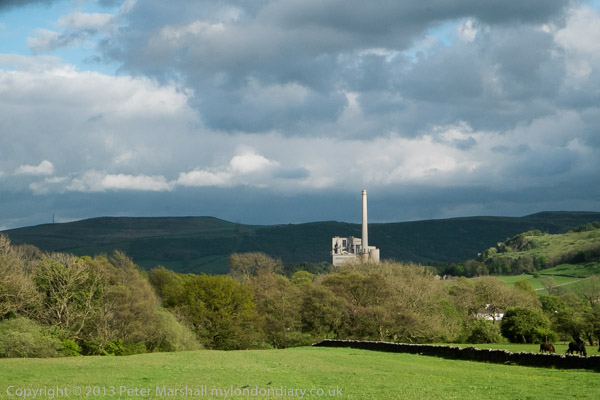
There were a few times when I would have liked something longer than the 18-55mm (27-83mm equivalent); the extra reach of the Nikon DX 18-105mm is really a big advantage. But it does weigh 35% more and takes a 67mm filter compared to 58mm for the Fuji – despite the Fuji being almost a stop faster. Optically I don’t think there is much to choose between the two; despite the Nikon being one of the cheapest Nikon lenses it is a better performer than many in their range, though the build quality is perhaps best illustrated by the fact that I’m now on my third example. The Fuji certainly seems better built and is more expensive when bought alone.
Even more expensive at around £750 is the new Fuji XF18-135mmF3.5-5.6 R LM OIS WR which is roughly the same size as the Nikon, but looks pretty impressive – and is weather resistant with a claim that it offers the equivalent of 5 stops of image stabilization to partly make up for its rather low maximum aperture.
But for most purposes you can use a bit of ‘digital magnification’, cropping the 4896 x 3264 pixels (16.3 Mp) to say 3264 x 2176 – still 7Mp – and enough for most purposes. That makes the 55mm into a respectable 127mm telephoto. I think I’ll stick with the 18-55mm, though possibly getting a longer zoom for those few occasions where length is vital. Of course it’s actually the wider end that interests me more, and the Fuji 10-24mm f4 R OIS is a rather lighter alternative to the Nikon 16-35mm, so may well be my next lens purchase.
Unfortunately we ran out of time and had to turn back before the final climb to the top of Mam Tor, but at least is wasn’t because of exhaustion at carrying a heavy camera bag. But it does still take longer to take photographs on Fuji than on Nikon, and there were still some of those frustrating moments where the quickest way to bring the camera into life was to turn it off and then on again. If only Fuji could follow Nikon’s example, where the lightest touch on the release instantly brings the camera back into picture-making mode.
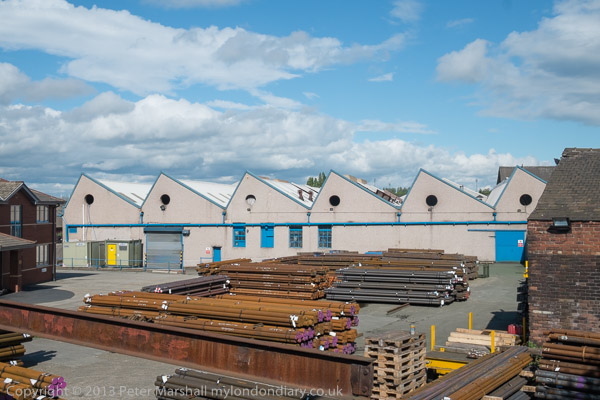
There is still some steel in Sheffield
I had a second chance to use the camera on the way home, where I was able to take a more leisurely walk around a little of central Sheffield as we had an hour to two to wait for a train. With a little more time to take care over what I (and the Fuji EX1) was doing there were no problems with the photographs.
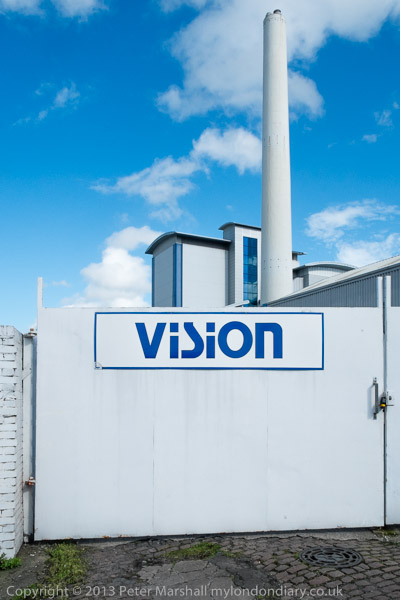
More pictures from Derbyshire and Sheffield.
______________________________________________________
My London Diary : Buildings of London : River Lea/Lee Valley : London’s Industrial Heritage
All photographs on this and my other sites, unless otherwise stated, are taken by and copyright of Peter Marshall, and are available for reproduction or can be bought as prints.
To order prints or reproduce images
________________________________________________________